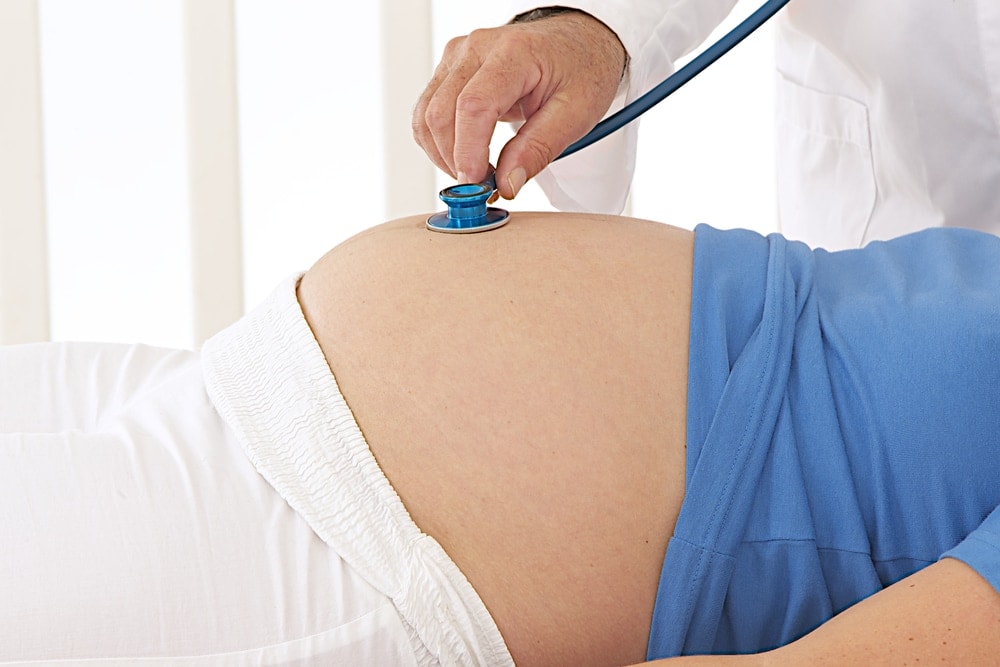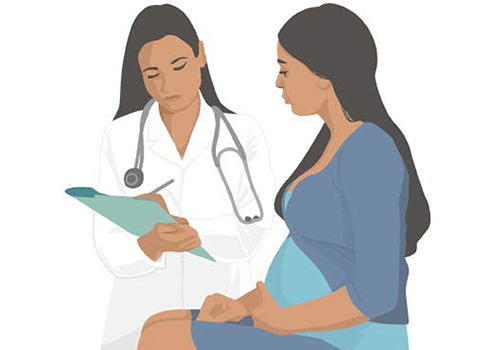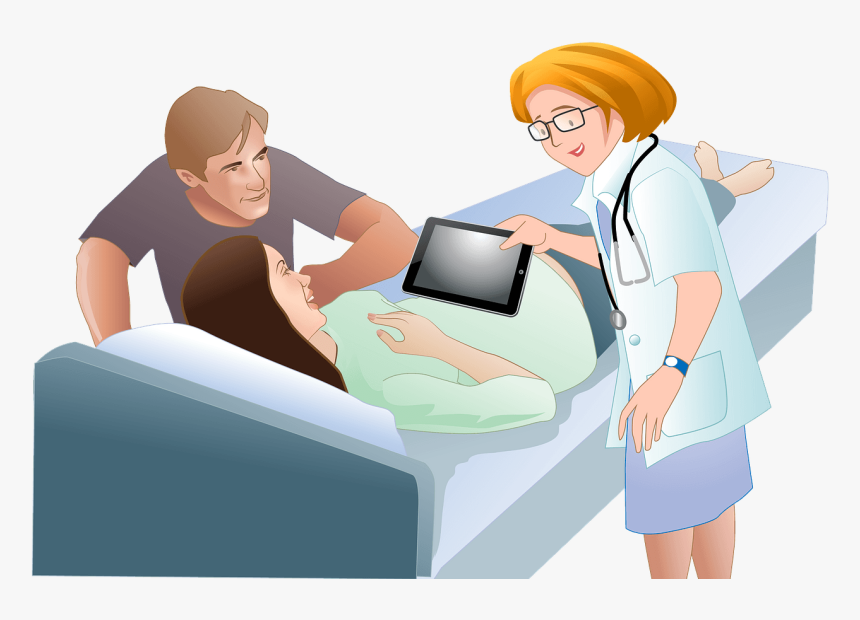
Bowel atresia is a congenital condition in which the small intestine does not form correctly, leading to an obstruction in the intestines. It is one of the most common gastrointestinal birth defects, affecting 1 in 6,000 live births. There are several types of bowel atresia, including jejunal atresia, ileal atresia, and gastroschisis. These conditions can cause serious medical problems and require immediate treatment. What is bowel atresia? A bowel atresia is a condition in which the small intestine does not form correctly, leading to an obstruction in the intestines. It can lead to other complications like malabsorption and infection, which could cause significant health problems and even death. There are several types of bowel atresia including jejunal atresia, ileal atresia, and gastroschisis.
There are several potential symptoms of bowel atresia including fever, lochia (blood loss), vomiting, diarrhea, weight loss, and abdominal pain. Bowel atresia may be diagnosed before birth through a combination of ultrasound and fetal echocardiogram. In other cases, the diagnosis is made after birth through abdominal or chest x-ray.
Read MoreDate: jan 15, 2024 Reference
Soft markers are subtle features on an ultrasound that may indicate a potential genetic anomaly or other health issue in the fetus. They are often seen as part of normal fetal development, but they can also be indicative of more serious problems. It is important for pregnant women to pay attention to soft markers during pregnancy so that they can be aware of any potential issues and get the necessary medical care for their baby. By understanding what soft markers are and how to interpret them, pregnant women can ensure that their baby is developing normally and receive the proper care if any issues arise. The most common soft markers are seen in the brain and heart. Soft markers can also be seen on other organs, such as the kidneys or lungs. Soft markers of development vary in severity from fetus to fetus but they are typically an area with brighter than average colors that may change over time during fetal development. By paying attention to them, pregnant women will know what is normal for their baby and how to care for it if any potential issues arise. It is important that these soft markers are not ignored as this could lead to health problems for the baby later in life..
Read Morejan 15, 2024Reference


Discordant growth in pregnancy is a condition where the fetus does not grow at the same rate as it should during pregnancy. This can be due to either Intrauterine Growth Restriction (IUGR) or Fetal Macrosomia (FGM). IUGR is a condition where the fetus is smaller than normal for its gestational age, while FGM occurs when the fetus is larger than normal for its gestational age. Both of these conditions can have serious implications for both mother and baby, making it important to identify discordant growth in pregnancy. Ultrasound scans are routinely used to monitor fetal growth, and any changes in fetal size should be investigated further.
Read MoreDate: jan 15, 2024 Reference
Delayed diagnosis during pregnancy is a situation where a pregnant woman does not receive timely medical care or treatment for her condition. This can be dangerous for both the mother and the unborn baby as it can lead to serious health complications. Prenatal screening tests are important in helping to diagnose any potential issues early on, which is why prenatal care is so important. Late diagnosis during pregnancy can cause serious medical issues, such as birth defects, developmental delays, and even death in some cases. It is essential that pregnant women get regular prenatal care and follow-up screenings to ensure their health and the health of their unborn baby. . Delayed diagnosis usually follows a pattern of not receiving care or treatment for an ailment, such as problems with pregnancy. Symptoms might include pain, bleeding, or other problems that could lead to serious health complications/issues. It is important during prenatal care to make sure any potential issues are caught and addressed early on so they can be treated before they become more severe. Early diagnosis is beneficial for both the mother and the unborn baby as it could lead to a more favorable outcome. Symptoms tend to be less severe, which can reduce the risk of developing a potentially life-threatening condition. Regular prenatal care also provides education, guidance, and support for mothers through their pregnancy. Prenatal care helps build healthy relationships with both mother and baby that can last after childbirth. It is important during pregnancy to make sure any potential problems are caught early on in order to prevent complications from arising later on in the pregnancy (such as those mentioned below) or even after birth in some cases.
Read MoreDate: jan 03, 2024 Reference


Soft markers are subtle features on an ultrasound that may indicate a potential genetic anomaly or other health issue in the fetus. They are often seen as part of normal fetal development, but they can also be indicative of more serious problems. It is important for pregnant women to pay attention to soft markers during pregnancy so that they can be aware of any potential issues and get the necessary medical care for their baby. By understanding what soft markers are and how to interpret them, pregnant women can ensure that their baby is developing normally and receive the proper care if any issues arise. The most common soft markers are seen in the brain and heart. Soft markers can also be seen on other organs, such as the kidneys or lungs. Soft markers of development vary in severity from fetus to fetus but they are typically an area with brighter than average colors that may change over time during fetal development. By paying attention to them, pregnant women will know what is normal for their baby and how to care for it if any potential issues arise. It is important that these soft markers are not ignored as this could lead to health problems for the baby later in life..
Amniocentesis is a test that requires more samples of amniotic fluid surrounding the fetus in order to test for chromosomal abnormalities. It can detect Down syndrome or other chromosomal conditions, such as trisomy 18 or trisomy 13. The procedure involves taking a needle and extracting amniotic fluid near the baby's head, which is then sent to the lab for testing. If there are chromosomal abnormalities, doctors may recommend terminating the pregnancy and giving birth to a child with special needs. What is a viability scan? A viability scan is a medical test that can be used to assess the health of the developing fetus in utero. It involves using ultrasound to determine if there are any signs that the baby may need emergency, or non-urgent, intervention. If an abnormality is found, it can cause an increase in fetal distress and it will be necessary for a more invasive procedure to be performed on the baby. Can I do an early fetal viability scan at home? Yes, you can purchase a home pregnancy test kit and perform your own early fetal viability scans at home. These kits generally have a window where you can do a scan.. Read MoreDate: Dec 28, 2023 Reference
Mid-trimester targeted scans are an important part of pregnancy care. A Mid-trimester Targeted Scan is an ultrasound scan that is usually done between weeks 18 and 22 of pregnancy. It is a detailed scan of the fetus and its surrounding structures, giving us a better insight into the anatomy and development of the baby. The scan helps to identify any potential risks or abnormalities in the fetus, as well as to assess growth and development. These ultrasound scans help to assess the health of both the mother and the fetus, as well as providing valuable information for making decisions about care during pregnancy. The benefits of mid-trimester targeted scans include providing information about fetal growth and development, detecting any potential birth defects or other health issues, and helping to monitor the mother’s health. Furthermore, these scans can help to identify any risks that may be present during pregnancy or labor. By having a better understanding of the mother’s and baby’s health, mid-trimester targeted scans can ensure that both are provided with optimal care throughout the pregnancy period. The mid-trimester scan can be used to diagnose any conditions that would require intervention during labor and delivery. For example, it can reveal a condition such as spina bifida or anencephaly, which would make having a natural birth difficult and requires the baby to be delivered via cesarean section. It is also used for the purpose of screening for genetic conditions so that parents can decide whether the risk of having more children is worth it.
Read MoreDate: Oct 23, 2023 Reference


Prenatal diagnosis is a medical process that involves testing for any potential health issues in a fetus before it is born. It is important because it can detect any genetic or physical abnormalities in the fetus and allow parents to make informed decisions about the pregnancy. Prenatal diagnosis also helps doctors to provide timely care and treatment if needed. The most common types of antenatal testing include amniocentesis, chorionic villus sampling (CVS), ultrasound, and blood tests. These tests can help identify any potential risks or complications in the pregnancy, such as chromosomal abnormalities, birth defects, and genetic disorders. Knowing these risks ahead of time allows parents to make informed decisions about their pregnancy and ensure that they are providing their baby with the best possible care. Amniocentesis is a test that requires more samples of amniotic fluid surrounding the fetus in order to test for chromosomal abnormalities. It can detect Down syndrome or other chromosomal conditions, such as trisomy 18 or trisomy 13. The procedure involves taking a needle and extracting amniotic fluid near the baby's head, which is then sent to the lab for testing. If there are chromosomal abnormalities, doctors may recommend terminating the pregnancy and giving birth to a child with special needs.
What is a viability scan? A viability scan is a medical test that can be used to assess the health of the developing fetus in utero. It involves using ultrasound to determine if there are any signs that the baby may need emergency, or non-urgent, intervention. If an abnormality is found, it can cause an increase in fetal distress and it will be necessary for a more invasive procedure to be performed on the baby. Can I do an early fetal viability scan at home? Yes, you can purchase a home pregnancy test kit and perform your own early fetal viability scans at home. These kits generally have a window where you can do a scan.. Read MoreDate: Dec 28, 2023 Reference
Acute respiratory distress syndrome (ARDS) is a severe form of lung injury that can lead to life-threatening breathing difficulties. It is a medical emergency and requires immediate treatment.
There are many potential causes of FGR, including maternal malnutrition, smoking, alcohol consumption or drug use during pregnancy. Awareness of these risk factors is essential in order to identify and manage the condition appropriately. Early diagnosis and treatment are key to ensuring the best possible outcome for both mother and baby. It is important for medical professionals to be aware of the signs and symptoms of FGR so that they can diagnose it quickly and provide appropriate care.
Read MoreDate: Oct 26, 2023 Reference


A fetal viability scan is an important part of prenatal care and can provide valuable information about the health and development of an unborn baby. It is a type of ultrasound scan that is used to assess the health and well-being of a fetus, including its size, position, movements, heartbeat, and possible abnormalities. The scan should be conducted between 18-24 weeks into pregnancy to ensure that the fetus is developing normally. During this time frame, doctors can also check for any signs of complications or potential risks that may affect the baby’s growth or development. It is important for pregnant women to get regular fetal viability scans in order to monitor their baby’s progress and ensure its healthy growth. What is a viability scan? A viability scan is a medical test that can be used to assess the health of the developing fetus in utero. It involves using ultrasound to determine if there are any signs that the baby may need emergency, or non-urgent, intervention. If an abnormality is found, it can cause an increase in fetal distress and it will be necessary for a more invasive procedure to be performed on the baby. Can I do an early fetal viability scan at home? Yes, you can purchase a home pregnancy test kit and perform your own early fetal viability scans at home. These kits generally have a window where you can do a scan..
Read MoreDate: Dec 05, 2023 Reference
Acute respiratory distress syndrome (ARDS) is a severe form of lung injury that can lead to life-threatening breathing difficulties. It is a medical emergency and requires immediate treatment.
There are many potential causes of FGR, including maternal malnutrition, smoking, alcohol consumption or drug use during pregnancy. Awareness of these risk factors is essential in order to identify and manage the condition appropriately. Early diagnosis and treatment are key to ensuring the best possible outcome for both mother and baby. It is important for medical professionals to be aware of the signs and symptoms of FGR so that they can diagnose it quickly and provide appropriate care.
Read MoreDate: Oct 26, 2023 Reference


Fetal Growth Restriction (FGR) is a condition in which the fetus does not grow as expected during pregnancy. It is also known as Foetal Intrauterine Growth Restriction (IUGR). FGR can result in serious health complications for both the mother and baby and can even be fatal. It is important to understand the causes of FGR so that it can be identified early and managed appropriately.
Read MoreDate: Oct 26, 2023 Reference
A 4D scan is a type of ultrasound that uses 3D imaging technology to create a real-time image of your baby in the womb. It is also known as a 3D-4D sonogram, and it offers an incredibly detailed view of your baby's features, movements, and activities. With this scan, you can get an idea of what your baby looks like before they are born, including facial expressions and body movements. The 4D scan can also detect any potential birth defects or other health issues that may be present in the fetus. Additionally, it can provide information about the position of the placenta and umbilical cord. Overall, a 4D scan is a great way to get an early glimpse into your baby's development in utero! What are the benefits of a 4D ultrasound? A 4D ultrasound can provide parents-to-be with more information about their baby’s development, such as the length, size, and position of the fetus. Other benefits to having a 4D scan include being able to see your baby move in 3D and seeing your little one in real time on screen..
In addition to offering parents an opportunity to bond before birth, this type of scan can also be used during labor as an accurate way for doctors to monitor the fetus’ development. Understanding the Difference between 2D and 4D Scans Ultrasound scans are used to diagnose medical conditions and monitor the development of a fetus during pregnancy. 2D ultrasound scans provide a two-dimensional image of the fetus while 3D and 4D scans provide three-dimensional images. The difference between 2D, 3D, and 4D scans lies in their resolution and the abilities they offer for doctors to diagnose certain conditions. 2D ultrasound scan is the most common type of scan used during pregnancy. It provides a flat image of the fetus which can be used to detect abnormalities or measure fetal growth. 3D ultrasound scans cost more than 2D but it gives more detailed images of the baby’s face, body, and internal organs which helps doctors diagnose certain conditions more accurately. .
Date: oct 09, 2023 Reference


Lamaze therapy is a type of prenatal care that focuses on providing expectant mothers with the knowledge, skills, and support they need to have a healthy pregnancy and childbirth experience. It is based on the belief that childbirth is a natural process that should be experienced with minimal medical intervention. Lamaze therapy teaches expectant mothers about their bodies and how to use breathing techniques, relaxation exercises, massage, and other comfort measures during labor and delivery. In addition to helping women cope with pain during childbirth, Lamaze therapy also helps them understand their options for labor and delivery so they can make informed decisions about their care. Benefits of Practicing Lamaze Therapy During Pregnancy Practicing Lamaze therapy during pregnancy can provide a variety of benefits for expecting mothers. Lamaze therapy is a type of prenatal exercise and breathing technique that helps pregnant women prepare for labor and delivery. Pregnant women may attend childbirth education classes, prenatal exercise and breathing training, or Lamaze training to prepare for labor. These types of prenatal exercises are typically taught in a group setting with an experienced childbirth educator or instructor. In some facilities (such as hospitals), pregnant women are given individualized instruction from a trained professional in preparation for labor and delivery..
Maternity care services are essential for pregnant women and postpartum mothers. Antenatal and postnatal care are two of the most important types of maternity care services available. These services provide medical advice, guidance, and support to pregnant women throughout their pregnancy and postpartum period. Additionally, breastfeeding support services can be beneficial for new mothers who are trying to establish a successful breastfeeding relationship with their baby..
Date: oct 09, 2023 Reference
Introduction: What is a Fetal Viability Scan and When Should it be Conducted? A fetal viability scan is an important part of prenatal care and can provide valuable information about the health and development of an unborn baby. It is a type of ultrasound scan that is used to assess the health and well-being of a fetus, including its size, position, movements, heartbeat, and possible abnormalities. The scan should be conducted between 18-24 weeks into pregnancy to ensure that the fetus is developing normally. During this time frame, doctors can also check for any signs of complications or potential risks that may affect the baby’s growth or development. It is important for pregnant women to get regular fetal viability scans in order to monitor their baby’s progress and ensure its healthy growth..
Examples of findings on a fetal viability scan can include: ● A healthy baby with good heart rate and no abnormalities ● An underdeveloped fetus with an abnormal heart rate, some small abnormalities, or the presence of fluid in the abdomen ● The embryo is not developing properly and is at risk for miscarriage ● The embryo has a poor blood supply and is at risk for developing conditions like anemia, low birth weight and prematurity ● The fetus has died or the gestational sac has ruptured FAQs- What is a viability scan? A viability scan is a medical test that can be used to assess the health of the developing fetus in utero. It involves using ultrasound to determine if there are any signs that the baby may need emergency, or non-urgent, intervention. If an abnormality is found, it can cause an increase in fetal distress and it will be necessary for a more invasive procedure to be performed on the baby. Can I do an early fetal viability scan at home? Yes, you can purchase a home pregnancy test kit and perform your own early fetal viability scans at home. These kits generally have a window where you can do a scan. Understanding the Different Types of Foetal Viability Scans in India Fetal viability scans are an important part of pregnancy care in India.
Date: oct 09, 2023 Reference


Becoming a new mother is an exciting time, but it can also be overwhelming. Taking care of a newborn and adjusting to life with a baby can be physically and emotionally draining. It is important for new mothers to take time for themselves and practice self-care. With the right postpartum self-care tips, new mothers can make sure they are taking care of their own needs while also caring for their baby. Postpartum self-care tips involve recovery from childbirth exercises, diet recommendations for new mothers, and sleep tips for moms...
Maternity care services are essential for pregnant women and postpartum mothers. Antenatal and postnatal care are two of the most important types of maternity care services available. These services provide medical advice, guidance, and support to pregnant women throughout their pregnancy and postpartum period. Additionally, breastfeeding support services can be beneficial for new mothers who are trying to establish a successful breastfeeding relationship with their baby..
Date: September 26, 2023Reference
Postnatal maternity care is a critical part of the postpartum period. It is essential for new mothers to receive proper postnatal care in order to ensure a healthy recovery and successful transition into motherhood. This comprehensive guide will provide an overview of all you need to know about postnatal maternity care, including what services are available, who can provide them, and how they can help support maternal health care. We will also discuss some of the key benefits associated with receiving postpartum care and why it's important for new mothers to receive this type of support during this time..
Postnatal maternity care is a formalized health plan that provides support, guidance, and education to new mothers after they give birth. It can include a variety of different services both during and after pregnancy including nutrition counseling, breastfeeding support, postpartum doula services, physical therapy, lactation consulting services and more. All of these services impact the mother's ability to recover from childbirth and enter into motherhood successfully. There are many different types of postnatal hand-outs that can be provided during this time which include basics such as what breastfeeding means for the mother and her baby, why it's important for the mother to rest after childbirth, the importance of prenatal care and a more comprehensive guide to postnatal care..
Postnatal Maternity Care is a set of health services provided to women during the postpartum period, which is the period of time after childbirth. It includes physical and emotional care for both mother and baby. It is important for women to receive proper postnatal care in order to ensure that they are healthy and well-cared for after giving birth. Postnatal care also helps to reduce the risk of complications, such as infection or depression, that can arise during this time. Proper postnatal care should be provided by experienced maternal healthcare providers who are knowledgeable about the needs of mothers and babies during this period.
Date: September 25, 2023 Reference


Certified Lamaze Educators in a certified hospital play an important role in helping pregnant women make informed decisions about their pregnancy care and delivery. Lamaze classes are designed to provide expectant mothers with the knowledge and skills they need to have a safe and healthy pregnancy, labor, and delivery. Through these classes, mothers learn about the different stages of labor, relaxation techniques for pain management during labor and delivery, breathing exercises for comfort during labor, positions for pushing during delivery, as well as other helpful information. By taking a certified Lamaze class before giving birth, expectant mothers can feel more confident in their ability to handle the physical demands of childbirth..
The benefits of mothers taking Lamaze classes include: Increased knowledge and confidence in the stages of labor, Learn strategies for pain management during labor and delivery, including techniques to help recover from excruciating pain, Learn breathing exercises that can be used in the place of anesthesia, Prepare themselves for different positions during childbirth, such as pushing positions, Gain access to a wide range of information about childbirth and their own baby.
Date: September 22, 2023 Reference
Lamaze therapy is an evidence-based holistic approach to pregnancy and fetal care that helps to keep the baby healthy. It is a natural childbirth method that promotes active participation of the mother during labor and delivery. It involves breathing techniques, relaxation, massage, and other activities that help to reduce pain and anxiety during labor
Lamaze therapy also helps to promote better communication between the mother and her healthcare provider. This approach also provides education on pregnancy health, nutrition, exercise, labor positions, birth plans, and postpartum care. By using a holistic approach such as Lamaze therapy for pregnancy and fetal care, mothers can ensure that their babies are born healthy and happy.
Lamaze therapy also helps to promote better communication between the mother and her healthcare provider. This approach also provides education on pregnancy health, nutrition, exercise, labor positions, birth plans, and postpartum care. By using a holistic approach such as Lamaze therapy for pregnancy and fetal care, mothers can ensure that their babies are born healthy and happy.
Date: September 19, 2023 Reference


Pre-conception counseling, also known as pre-conception care or pre-conceptual counseling, refers to a consultation with healthcare professionals before attempting to conceive a baby. It involves discussions and assessments aimed at optimizing the health of both partners and increasing the chances of a healthy pregnancy and baby. Here are some key aspects typically covered during pre-conception counseling
know moreDate: September 18, 2023 Reference
Antenatal care, also known as prenatal care, refers to the healthcare and support provided to pregnant women by healthcare professionals throughout their pregnancy. It is a critical component of ensuring a healthy pregnancy and promoting the well-being of both the mother and the developing baby. Antenatal care typically involves regular check-ups, screenings, and education to monitor the progress of the pregnancy
know moreDate: September 11, 2023 Reference


International Women's Day is an important event that celebrates the social, economic, cultural and political achievements of women around the world. It is also a day to remind us of the importance of taking care of our health and scheduling regular health checkups. Regular health checkups are essential for women to monitor their overall health and detect any potential issues early on. This includes physical exams, gynecological exams, breast exams, mammograms and other tests as recommended by your doctor. By scheduling regular health checkups, women can take control of their own self-care and ensure that they are receiving the best possible healthcare available to them.
Date: March 07, 2024Reference
Holi is a Hindu festival of colors celebrated in India and other countries with large Hindu populations. It is a joyous celebration that marks the beginning of spring and the end of winter. Every year, people gather together to celebrate Holi with vibrant colors, music, dance and food. For new mothers, Holi is a special occasion as it marks the start of their journey into motherhood. It is an opportunity for them to bond with their families and friends in a festive atmosphere filled with joy and laughter.
Moreover, Holi has many customs and traditions associated with it that make it even more special for new mothers – from smearing each other's faces with bright colors to playing games like 'Dhulivandan' or 'Holi Khel'. to singing bhajans, Holi is a day to remember. The festival of Holi brings with it many new traditions and customs that mark the beginning of spring. Here are some reasons why busting into colors during Holi has become a celebration for all those who celebrate this occasion.
It is a day for bursting with joy: One traditional custom associated with the festival of Holi is smearing each other's faces and bodies with bright colors. The excitement of breaking out into colors during the event provides an immense sense of joy, making it one to remember. Moreover, new mothers get to remember the joy of their new baby's birth by celebrating this event. The festival is also celebrated with a special game called 'Dhulivandan'. The way to play the game is to smother your opponent in brightly-colored powder while they cover your face and body in the same color of powder. This takes place until one person's body is completely covered in colors, earning them a spot as winner!
Date: march 23, 2024 Reference


Holi is a popular Hindu spring festival celebrated in India and Nepal. It is also known as the “Festival of Colors” or the “Festival of Love”, as it marks the beginning of spring and celebrates love, joy, and brotherhood. Celebrating Holi while pregnant can be a challenge due to the potential risks associated with it. This article will provide tips on how to celebrate Holi safely while pregnant, and discuss some of the precautions that need to be taken in order to enjoy this special occasion without putting your health or your unborn baby at risk.
Date: march 23, 2024Reference